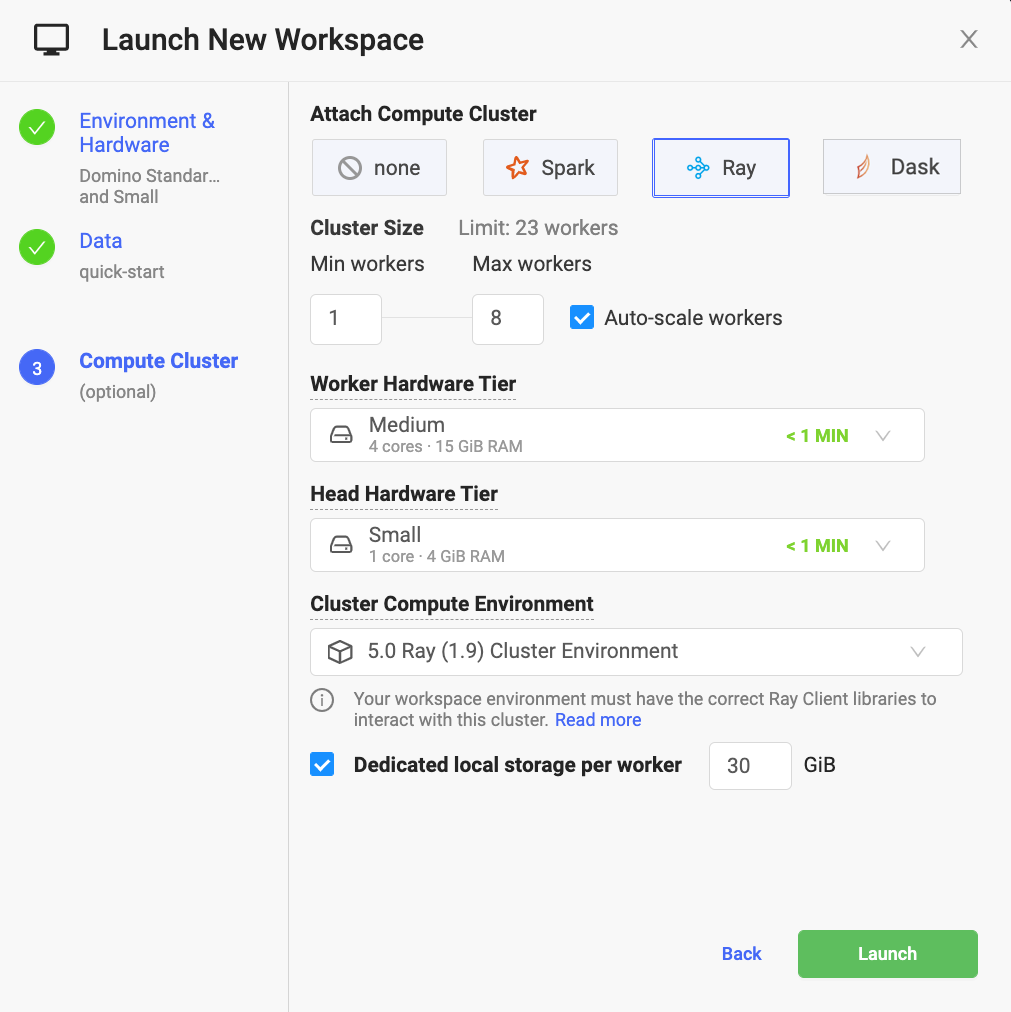
Every executive will tell you that data science and machine learning are critical to their companies’ future success. Yet in the same breath, most will admit that their investment in data science and machine learning isn’t yet delivering the results they want.
The hard truth is that while it’s easy to get a quick win with machine learning, scaling its impact across a business is incredibly challenging – to support more projects, larger teams, different processes. Many teams encounter significant friction during various steps in the data science lifecycle, clustered around the three fundamental elements that make data science unique:
- Compute. Data scientists need unprecedented compute power and agility to experiment with new software tools. Most companies can't handle the unique infrastructure and software needs of modern data science techniques and workloads. The result is lots of time-consuming DevOps work, limiting the pace of research.
- Data. Despite decades of effort, working with data still presents enormous friction for data scientists. They have to look in dozens of different places to find the data they need, they may not have proper access and require IT help to get it, and then each team has to write their own data access code to be able to work with the data.
- Models. Models are a new type of digital asset for most businesses. They’re probabilistic and behave differently from more traditional IT assets like software. Data scientists run into friction getting models deployed, which delays business impact. And then, inconsistent or non-existent practices for monitoring and updating them jeopardize key business decisions and outcomes.
Reducing this friction has always been our vision for Domino: a platform that accelerates model velocity by changing how teams work, not what they work with or work on. By automating best practices, creating more consistency, and increasing collaboration, Domino is like a flywheel that helps data science teams get faster at getting better.
Model Velocity is Critical for Model-Driven Business
“As the world’s fourth-largest reinsurer, we’re taking a model-driven approach to help clients control and manage risk—natural risks, climate risks, health risks, geopolitical risks, cyber risks, and many others. To this end, we’ve implemented a multi-cloud strategy along with Domino’s Enterprise MLOps platform to increase our model velocity so we can address customer needs in a quarter of the time it used to take us.”
– Antoine Ly, Head of Data Science, SCOR
Introducing Domino 5.0
Today we’re proud to announce the release of Domino 5.0 – the most ambitious and impactful release in our company history. Domino 5.0 introduces groundbreaking new capabilities that address core friction points in the data science lifecycle.
Autoscaling Clusters
To put more powerful compute in data scientists’ hands, Domino 5.0 introduces Autoscaling Clusters. With a few clicks, data scientists can spin up elastic clusters for the most popular types of distributed compute — Spark, Ray, and Dask. This enables data scientists to test many more ideas and develop better models faster. The breakthrough in Domino 5.0 is the ability to monitor data science workloads and dynamically grow and shrink compute clusters to optimize utilization, reduce cost, and support rapid iteration. When combined with the integration with NVIDIA AI Enterprise that we announced last week, workloads can be sped up by a factor of 100 or more.

Data Sources
To democratize access to critical data, Data Sources in Domino 5.0 let data science teams securely share and reuse common data access patterns. Data scientists waste tons of time trying to overcome DevOps barriers related to installing drivers and specific libraries, just to get access to the data they need. Domino 5.0 streamlines that entire process, allowing them to more easily create new data source connectors and share them with colleagues, or use pre-built connectors shared by administrators – all in an intuitive, collaborative, and highly secure manner.

Integrated Monitoring with Automated Insights
To simplify how companies operationalize models, Domino 5.0 introduces Integrated Monitoring with Automated Insights. This tight integration of what was formerly a separate Domino monitoring product (Domino Model Monitor) allows customers to dramatically streamline their workflow for deploying, monitoring, and updating models. Specifically, Domino 5.0 will automatically set up prediction data capture pipelines and model monitoring for models built in Domino. New Automated Insights help data scientists rapidly identify the root cause of why a model may not be performing as well as when it was new, most likely due to prediction data drift or ground truth data that’s fed back into Domino. Armed with this insight, data scientists can quickly reconstitute the original development environment to retrain or rebuild models due to changes in the market, customer preferences, etc.

Domino customers that upgrade to Domino 5.0 will immediately have the opportunity to try model monitoring at no additional charge. How's that for an incentive to upgrade?
Conclusion
With Domino 5.0, companies get a unified platform that reduces friction at key points in the end-to-end data science lifecycle – unleashing model velocity to grow revenue, improve the customer experience, and outcompete their peers. Over the coming weeks, you’ll be able to read separate blogs on many of the innovations in Domino 5.0, and demo videos will illustrate the unique benefits that tightly integrating core data science functions can have on improving how data scientists work.
And, if you missed our Domino 5.0 launch event featuring Atul Gawande (renowned surgeon, author, and performance improvement expert) and Dr. Najat Khan (Chief Data Science Officer and Global Head of Strategy & Operations for Research & Development at the Janssen Pharmaceutical Companies of Johnson & Johnson and Co-Chair of the Johnson & Johnson Data Science Council), you can watch the replay here.
Bob Laurent is the Head of Product Marketing at Domino Data Lab where he is responsible for driving product awareness and adoption, and growing a loyal customer base of expert data science teams. Prior to Domino, he held similar leadership roles at Alteryx and DataRobot. He has more than 30 years of product marketing, media/analyst relations, competitive intelligence, and telecom network experience.
RELATED TAGS
Subscribe to the Domino Newsletter
Receive data science tips and tutorials from leading Data Science leaders, right to your inbox.
By submitting this form you agree to receive communications from Domino related to products and services in accordance with Domino's privacy policy and may opt-out at anytime.




